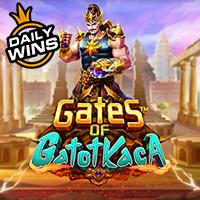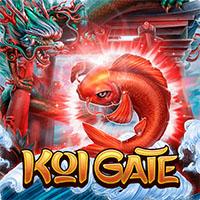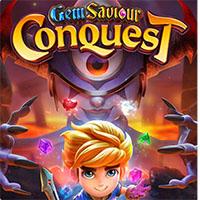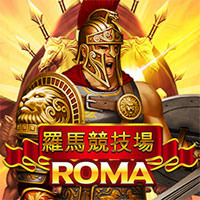

















Building upon the foundational concept detailed in Unlocking Value: How Upgrades Enhance Game Mechanics, this article explores how strategic upgrade design significantly elevates player engagement. While unlocking game value is essential, fostering sustained interest requires a nuanced approach to upgrade systems that resonate emotionally and psychologically with players.
1. Introduction: The Role of Upgrades in Elevating Player Engagement
Upgrades serve as a dynamic tool to maintain and deepen player engagement by providing ongoing challenges, rewards, and personalization. Unlike simple value unlocking, strategic upgrades aim to create a continuous narrative of progress, making players feel invested beyond the initial gameplay experience. When carefully designed, these mechanics nurture emotional bonds with the game, encouraging long-term retention and active participation.
Table of Key Concepts: Engagement Drivers through Upgrades
| Aspect | Impact on Engagement |
|---|---|
| Progress Perception | Fosters a sense of achievement and motivates continued play |
| Anticipation of Upgrades | Creates excitement and keeps players engaged during downtime |
| Player Agency | Enhances feelings of mastery and control over gameplay |
2. Beyond Value: The Psychological Impact of Strategic Upgrades on Players
Strategic upgrades influence players’ perceptions of progress, transforming simple mechanics into powerful motivators. When players anticipate new upgrades, they experience heightened motivation, driven by the desire to explore new paths or unlock hidden potential. This anticipation creates a psychological loop: players invest effort with the expectation of future rewards, reinforcing their commitment to the game.
“Upgrades are not just tools for enhancement—they are catalysts that reinforce a player’s sense of agency and mastery, essential for long-term engagement.”
Research in game psychology indicates that players derive a significant portion of their satisfaction from perceived competence and control. Well-designed upgrade systems tap into these needs, creating a feedback loop where mastery leads to more engagement, which in turn encourages further investment in upgrades.
3. Designing Upgrades for Long-Term Engagement
Effective upgrade design balances complexity with accessibility. Overly complicated systems may deter casual players, while overly simplistic ones risk boredom. Introducing meaningful choice—such as branching upgrade paths or customizable options—empowers players and fosters a personalized experience. These choices encourage replayability, as players explore different upgrade combinations to achieve diverse goals.
- Balance upgrade difficulty with player skill levels to maintain challenge without frustration
- Incorporate meaningful decision points that influence gameplay style or strategy
- Design upgrade trees that promote replayability through varied pathways
4. The Interplay Between Upgrades and Player Behavior
Upgrade systems shape not only how players develop their characters or assets but also influence their decision-making processes. For example, offering risk-reward upgrade choices can encourage players to take strategic risks, fostering a dynamic gameplay environment. Variations in upgrade options promote strategic diversity, keeping gameplay fresh and engaging.
However, developers must be vigilant to prevent upgrade fatigue—a scenario where players feel overwhelmed or exhausted by constant choices. Well-paced upgrade systems, coupled with challenges that adapt to player progression, help sustain engagement and maintain a rewarding difficulty curve.
5. Measuring Success: Analytics and Feedback in Upgraded Player Engagement
Data-driven insights are crucial for refining upgrade systems. Tracking how players utilize upgrades, their progression patterns, and engagement duration offers valuable feedback. For instance, if data shows players rarely choose certain upgrade paths, designers can rework those options to make them more appealing.
Regularly incorporating player feedback ensures upgrades remain attractive and relevant. Surveys, in-game polls, and community forums provide qualitative insights, complementing quantitative analytics to inform iterative improvements.
6. Case Studies: Successful Strategies for Maximizing Engagement via Upgrades
Many popular titles exemplify how strategic upgrade integration boosts engagement. For instance, The Witcher 3 employs upgrade paths that emphasize player choice and narrative impact, encouraging replayability. Similarly, Fortnite offers frequent, meaningful upgrades through seasonal content, maintaining a high level of player interest.
Conversely, poor implementation can lead to unintended consequences. Overly grind-heavy upgrade systems may cause frustration, reducing retention. Therefore, balancing upgrade accessibility with challenge is key to fostering a healthy player community.
| Best Practice | Outcome |
|---|---|
| Implement meaningful choice in upgrade paths | Increases replayability and player investment |
| Balance upgrade difficulty | Maintains challenge without causing frustration |
| Use analytics for iterative improvements | Enhances upgrade relevance and appeal |
7. From Engagement Back to Value: Reinforcing the Parent Theme
In conclusion, heightened player engagement through strategic upgrades not only extends gameplay longevity but also amplifies the overall value of game mechanics. As players become more emotionally invested, they are more likely to continue investing financially and socially, fostering loyalty and community involvement.
“Strategic upgrade systems serve as a pivotal bridge—transforming mere mechanics into emotionally compelling experiences that sustain long-term value.”
Ultimately, the cyclical relationship between engaging upgrade strategies and game value underscores the importance of thoughtful design. When executed effectively, upgrades do not just enhance gameplay—they cultivate a vibrant, loyal community that continually finds new reasons to return.
